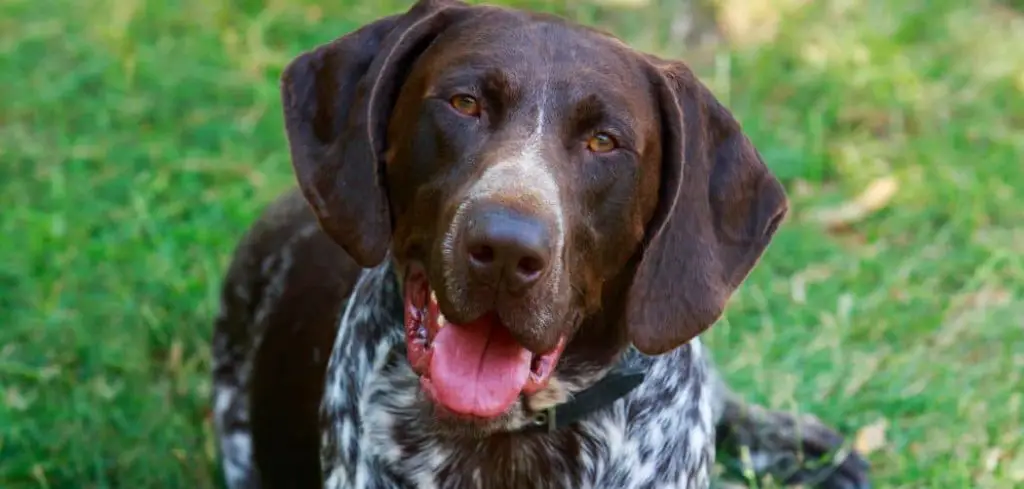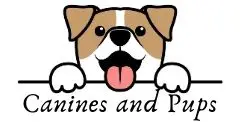If your dog has been eating grass, nibbling at leaves, or chewing on sticks, you’re not alone. These behaviors may seem strange — or even concerning — to dog owners.
We outline why dogs eat grass, leaves, and sticks, what these behaviors mean, when to worry, and how to respond. Let’s break it all down to help you understand what’s normal, what’s not, and how to keep your pup safe.
Table of Contents
Here’s Why Dogs Eat Grass, Leaves, and Sticks
Dogs eat grass, leaves, and sticks for a variety of reasons, including natural instincts, boredom, nutritional deficiencies, digestive relief, and curiosity.
Some dogs may nibble on grass to help induce vomiting when they feel nauseous, while others chew leaves and sticks out of playful behavior or to relieve teething discomfort.
Although occasional chewing is usually harmless, frequent ingestion can lead to digestive issues or signal an underlying health concern.

Common Reasons Why Dogs Eat Grass, Leaves, and Sticks
1. Natural Instinct and Ancestral Behavior
One of the most common reasons dogs eat grass, leaves, and sticks is due to instinct.
Wild canines, such as wolves and foxes, are known to eat plant matter occasionally.
This is believed to aid digestion or help cleanse their system.
Even domesticated dogs have retained some of these ancestral habits. The behavior isn’t always about hunger—it can be driven by innate foraging instincts.
Chewing or eating parts of plants is often a leftover survival behavior that still plays a role in how dogs interact with their environment today.
Related: Dog eating grass while pregnant (Here’s why)
2. Boredom and Attention-Seeking
Sometimes, dogs chew on sticks, grass, or leaves simply because they’re bored or want your attention.
This is especially common in intelligent, high-energy breeds who need plenty of mental stimulation and physical activity.
When a dog lacks stimulation or gets left alone for long periods, chewing on natural objects can become a form of entertainment or self-soothing.
It’s a way to pass the time and relieve frustration.
If your dog consistently goes for grass, leaves, or sticks, especially during outdoor play or walks, it might be time to introduce more toys, training exercises, or interaction into their routine.
3. Nutritional Deficiency or Pica
Eating non-food items like sticks, leaves, and grass can also indicate a nutritional imbalance.
Some dogs develop pica, a condition where animals compulsively eat items that are not normally considered food.
Pica can be triggered by deficiencies in fiber, vitamins, or minerals.
A lack of certain nutrients might push your dog to seek them out in the environment—even from unlikely sources.
If you notice your dog frequently eating inedible things, including soil, rocks, or fabric in addition to grass and leaves, it’s worth discussing this behavior with your veterinarian.
Blood tests or a diet evaluation can reveal any missing nutrients.
Related: Dog eating grass pooping blood (Here’s why)
4. Upset Stomach or Digestive Relief
It’s commonly believed that dogs eat grass to make themselves vomit when they’re feeling sick.
While this theory isn’t supported by conclusive scientific evidence, there is anecdotal support for it.
Grass contains roughage and fiber, which may help with digestion or relieve minor gastrointestinal discomfort.
Some dogs may feel nauseous and instinctively eat grass as a way to either settle their stomachs or expel the contents by vomiting.
In many cases, dogs eat grass and don’t throw up afterward.
So while it may sometimes be linked to digestive upset, it isn’t always a reliable indicator of sickness.
Still, if your dog is eating grass and vomiting frequently, it’s time to consult a vet.
5. Curiosity and Exploration
Puppies and young dogs are especially prone to exploring their world with their mouths.
Chewing on sticks, leaves, and grass is often just part of their way of learning about their environment.
The taste, smell, and texture of natural objects stimulate their senses.
While this behavior is usually harmless, it becomes a concern when the objects being chewed or swallowed pose a choking hazard or are toxic.
This is why dog owners should monitor what their pets chew outdoors, especially in areas where harmful plants or treated grass may be present.
6. Teething and Oral Fixation
Young dogs that are teething might chew on sticks and leaves as a way to ease the discomfort of their gums.
Like human babies, puppies seek out things to gnaw on when their teeth are coming in.
Sticks can offer resistance that feels satisfying to chew, even though it may not be safe.
Over time, the behavior may stick as a habit even after the teething phase is over.
For adult dogs, oral fixation may also persist due to learned behavior, boredom, or simply because it feels good.
7. Stress, Anxiety, and Behavioral Disorders
Dogs eating grass, leaves, or sticks can sometimes signal stress or anxiety.
Similar to how some humans bite their nails when anxious, dogs may resort to chewing or eating non-food items to cope with emotional discomfort.
Triggers can include a change in environment, new people or animals in the home, loud noises, or separation anxiety.
Behavioral symptoms might include pacing, excessive licking, barking, and of course, chewing on anything they can find.
If stress is behind the behavior, managing the root cause through training, lifestyle changes, or calming tools (like puzzle toys or anxiety wraps) can help.
8. Medical Issues
In some cases, dogs eating sticks, grass, and leaves can be linked to underlying medical problems.
Disorders affecting the gastrointestinal system, such as inflammatory bowel disease, gastritis, or parasites, can cause odd eating habits.
If your dog shows other signs such as diarrhea, vomiting, lethargy, bloating, or sudden weight loss along with eating non-food items, a vet visit is necessary.
Persistent or compulsive eating behavior could point to deeper health concerns.
Is It Dangerous for Dogs to Eat Grass, Leaves, and Sticks?
While occasionally nibbling on grass or a leaf usually isn’t harmful, frequent ingestion or chewing on sticks can pose risks.
Potential dangers include:
Choking or gastrointestinal blockage from splintered wood or swallowed sticks
Toxicity from certain plants or chemically treated lawns
Dental damage or oral injuries from sharp sticks
Parasites or contaminants found on leaves and in soil
If your dog seems obsessed with eating grass, leaves, or sticks, it’s worth identifying the cause and implementing safer alternatives.
What To Do If Your Dog Eats Grass, Leaves, or Sticks
If your dog occasionally munches on a bit of grass or leaf without any other symptoms, you probably don’t need to worry.
However, here’s what to keep in mind:
Supervise outdoor time: Prevent access to sharp sticks or toxic plants.
Offer safe chew alternatives: Provide durable chew toys or bones to redirect the behavior.
Evaluate their diet: Ensure your dog is getting balanced nutrition with enough fiber and key vitamins.
Keep your yard clean: Avoid chemical pesticides and fertilizers, and remove potentially harmful plants.
Consult your vet: If the behavior is compulsive or accompanied by symptoms like vomiting, diarrhea, or lethargy.
When to Seek Veterinary Help
Reach out to a veterinarian if your dog:
Consistently eats grass, sticks, and leaves in large amounts
Vomits frequently after doing so
Shows signs of gastrointestinal distress or illness
Has changes in appetite, energy, or behavior
Eats other non-food items like plastic, rocks, or fabric
Persistent ingestion of non-food materials could signal a more serious condition that requires medical attention.
Key Takeaway
Dogs eat grass, leaves, and sticks for many reasons—ranging from instinct and boredom to nutritional deficiencies and medical conditions.
While this behavior is often harmless, it can sometimes indicate an underlying problem or pose a health risk if it becomes excessive or involves dangerous items.
Always observe your dog’s habits closely and consult a vet if you notice any worrying patterns.
With the right care and understanding, you can keep your furry friend safe, healthy, and happily exploring the world—without chewing it all up
